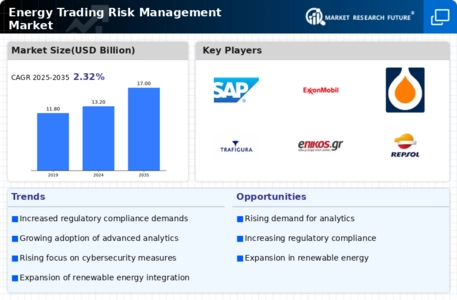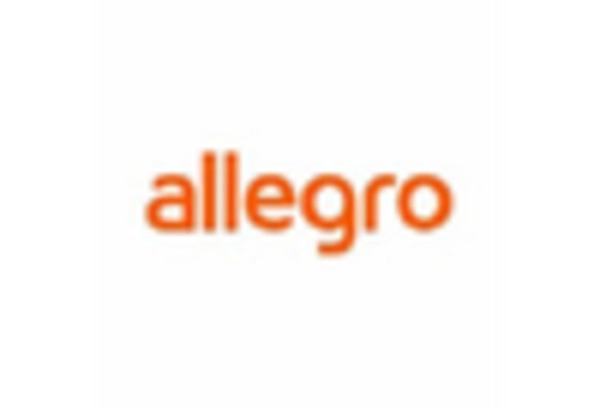Increased Market Volatility
Market volatility remains a critical driver in the Energy Trading Risk Management Market. Factors such as geopolitical tensions, fluctuating commodity prices, and changing consumer demands contribute to unpredictable market conditions. Recent data indicates that energy prices have experienced significant fluctuations, with some commodities seeing price swings of over 30% within short periods. This volatility compels energy trading firms to adopt robust risk management frameworks to safeguard their investments. As a result, the demand for sophisticated risk assessment tools and strategies is likely to rise, prompting firms to invest in advanced technologies and methodologies. This trend underscores the importance of effective risk management in navigating the complexities of the Energy Trading Risk Management Market.
Emerging Market Opportunities
The Energy Trading Risk Management Market is witnessing the emergence of new market opportunities driven by technological advancements and changing consumer preferences. As energy markets evolve, there is a growing need for innovative risk management solutions that cater to diverse trading strategies. The rise of decentralized energy systems and peer-to-peer trading models presents unique challenges that require tailored risk management approaches. Firms that can adapt to these emerging trends are likely to capture new market segments and enhance their competitive positioning. Furthermore, the increasing interest in energy storage solutions and electric vehicles is expected to create additional demand for effective risk management strategies, thereby propelling growth in the Energy Trading Risk Management Market.
Evolving Regulatory Frameworks
The Energy Trading Risk Management Market is increasingly influenced by evolving regulatory frameworks aimed at ensuring market integrity and protecting consumers. Regulatory bodies are implementing stricter guidelines that require energy trading firms to adopt comprehensive risk management strategies. This shift is evident in the rise of compliance-related expenditures, which have reportedly increased by approximately 15% over the past year. Firms that proactively adapt to these regulations are likely to gain a competitive edge, as they can better navigate the complexities of compliance while minimizing potential penalties. Consequently, the demand for sophisticated risk management solutions is expected to surge, further driving growth in the Energy Trading Risk Management Market.
Growing Demand for Renewable Energy Sources
The transition towards renewable energy sources is reshaping the Energy Trading Risk Management Market. As countries commit to reducing carbon emissions, the integration of renewables into energy portfolios presents unique challenges and risks. The International Energy Agency indicates that renewables could account for over 50% of global electricity generation by 2030. This shift necessitates advanced risk management strategies to address the volatility associated with renewable energy production. Companies that effectively manage these risks are likely to enhance their market position, as they can capitalize on the growing demand for clean energy solutions. Thus, the focus on renewables is a pivotal driver of change within the Energy Trading Risk Management Market.
Technological Integration in Energy Trading Risk Management
The integration of advanced technologies such as artificial intelligence and machine learning is transforming the Energy Trading Risk Management Market. These technologies enable firms to analyze vast amounts of data in real-time, enhancing decision-making processes. For instance, predictive analytics can forecast market trends and potential risks, allowing traders to mitigate losses effectively. The market for AI in energy trading is projected to grow significantly, with estimates suggesting a compound annual growth rate of over 20% in the coming years. This technological evolution not only streamlines operations but also improves compliance with regulatory requirements, thereby reinforcing the overall stability of the Energy Trading Risk Management Market.


















Leave a Comment